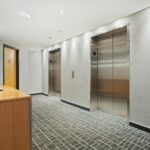When it comes to the hustle and bustle of commercial buildings, traction elevators are key players in keeping everything moving smoothly. These elevators are often the lifeline of a building, ensuring people and goods move efficiently between floors. But just like anything with moving parts, they require regular care to stay reliable. Skimping on maintenance could mean more than just a bumpier ride; it might lead to inconvenient breakdowns. By keeping up with maintenance, possible issues can be spotted and dealt with before they grow into bigger problems.
Taking care of a traction elevator is somewhat like keeping a classic car in good shape. Regularly checking the key components and making slight adjustments can go a long way. With a little regular attention, these elevators will not only operate smoothly but also enhance the overall experience for users. So, for anyone responsible for a commercial building, understanding how traction elevators work and how best to maintain them is key.
Understanding Traction Elevators
Traction elevators are a common sight in many commercial settings. These elevators operate using a system that involves cables and counterweights, offering a smooth ride while being energy efficient. The main idea is simple: an electric motor turns a wheel, known as a sheave, which moves the elevator car. The cables are connected to both the elevator car and a counterweight, balancing each other out, which reduces the energy needed by the motor.
There are two main types of traction elevators: geared and gearless. Geared elevators have a gearbox attached to the motor, which is responsible for turning the sheave. This setup is typically more economical and can reach moderate speeds. Gearless elevators, on the other hand, directly connect the motor to the sheave, allowing for greater speeds and smoother operation. This makes them a popular choice in high-rise buildings where quick and comfortable transit is a priority.
Both types come with their own benefits, but they share a need for regular care. Maintaining precise alignment and tension in the cables is crucial, as is ensuring that the sheave and motor operate smoothly. Routine checks prevent potential snags and help keep these systems dependable over time. Understanding how each type functions helps in choosing the right maintenance approach, ensuring reliability and extending the life of the elevator.
Routine Maintenance Tips for Commercial Traction Elevators
Regular maintenance is your best ally for a dependable traction elevator. Following a few simple tips can go a long way in keeping everything running smoothly. First up is scheduling regular inspections. These checkups help spot any potential wear and tear on key components before they lead to more serious issues. This includes checking the motor, cables, and sheaves to ensure everything is in top condition.
Lubrication is another critical factor. Applying the right lubricants to components like cables and guide rails reduces friction and improves performance. It also helps in extending the lifespan of these parts. Keeping the machine room clean and organized is equally important. A clutter-free space makes it easier for technicians to work, prevents accidents, and ensures the equipment runs efficiently.
Lastly, routinely check the tension and alignment of the elevator cables and pulleys. Misaligned cables not only cause wear and tear but could also lead to operational hiccups. By ensuring these elements are properly maintained, you contribute to the smooth operation of your elevator.
Upgrading Components for Better Performance
Sometimes, taking reliability up a notch means considering modern upgrades. One effective upgrade is modernizing the elevator control system. Newer systems often offer improved energy efficiency and can provide smoother rides, cutting down on the chances of abrupt stops or starts. Upgrades like these don’t just enhance reliability; they also enhance the overall passenger experience.
Another innovative change involves switching to energy-efficient lighting and materials within the elevator car. LED lights, for instance, use less electricity and last longer than traditional bulbs. This means lower maintenance demands and more consistent operation. Plus, they provide better lighting, ensuring safety and comfort for passengers.
Consider enhancing the ride quality with advanced brake systems. Brakes are essential for safe operation, and newer models offer improved control and precision. These upgrades might require some upfront investment, but they pay off by decreasing the need for frequent repairs and boosting the overall reliability of the elevator.
Emergency Procedures and Safety Protocols
Preparing for the unexpected is just as important as day-to-day maintenance. Training staff on emergency elevator protocols equips them with the know-how to respond effectively to issues like sudden stops or power failures. Regular training sessions ensure everyone knows how to use the emergency systems and communicate effectively during an event.
Testing and updating safety systems frequently is another key step. From alarms to emergency lighting, keeping these elements in tip-top shape reduces risks and ensures that systems work when needed most. Clear communication systems, such as functioning intercoms inside elevators, enable passengers to reach out for help if necessary.
With well-trained staff and robust safety measures in place, you ensure that any disruption is handled quickly and efficiently, protecting both passengers and equipment.
Ensure Reliable Elevator Performance
From routine checkups to smart upgrades, each step you take adds a layer of security and functionality to your traction elevator. Emphasizing professional maintenance is crucial, as experts can spot nuances that may not be evident to the untrained eye. This not only prevents immediate issues but also safeguards against future disruptions.
As technology evolves, staying updated with the latest advancements in elevator systems can greatly improve performance and safety. Long-term reliability isn’t just about minimizing the risk of breakdowns; it’s about providing a consistent and safe experience for every person who uses the elevator. By implementing these strategies, you lay the groundwork for a well-functioning elevator system that meets the demands of a busy commercial building, offering peace of mind and operational efficiency.
For those managing commercial buildings, ensuring the uninterrupted operation of your traction elevator is crucial. With regular maintenance, upgrades, and safety protocols, you can enhance both performance and safety. To learn more about maintaining and improving your commercial traction elevator, explore our detailed services at Kaiser Elevators.

